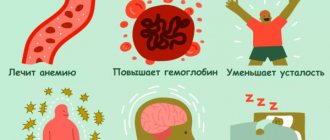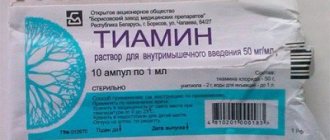In this article we will tell you:
- Key functions of vitamin D
- Interaction with other elements
- Normal vitamin D content in the body
- Signs and causes of vitamin D deficiency
- Consequences of vitamin D deficiency in the body
- Consequences of hypervitaminosis (excess vitamin D)
- How to find out your vitamin D level
- Rules for taking vitamin D
- Vitamin D Rich Foods
- Vitamin D in cosmetology
Not every person knows why vitamin D is needed. But in vain. This element plays a very important role in the body. Unlike other vitamins, vitamin D acts as a hormone and every cell in the body has a receptor for it. Thanks to it, the skeleton is formed normally, immunity increases, blood pressure and heartbeat improve. Vitamin deficiency is manifested by frequent colds, hair loss, and depression. Experts estimate that about 1 billion people have low levels of vitamin D.
But an excess of vitamin does not lead to anything good, so you need to know the norm and check your level. To do this, you need to take special tests. After them, the doctor may prescribe vitamin D supplements. In addition, it is worth diversifying your menu with products rich in this vitamin. In general, prepare a piece of paper and a pen, there is a lot of useful information about vitamin D below.
Key functions of vitamin D
Vitamin D (calciferol)
– two substances similar in structure and action: vitamin D2 (ergocalciferol) and vitamin D3 (colecalciferol or cholecalciferol).
Under the influence of sunlight, vitamin D3 is synthesized in the skin from provitamins (from food and synthesis from cholesterol). In the body, from these two forms (D2, D3), the active product of their transformation, calcitriol, is formed and used. It is formed in two stages: first in the liver and then in the kidneys.
The history of the discovery of vitamin D is associated with the study of retinol, or vitamin A. At the beginning of the 20th century, it was discovered that fish oil is rich in retinol. As an experiment, fish oil was given to dogs. After some time, scientists noticed that the animals stopped suffering from rickets, which was one of the main problems in pediatrics at that time.
Experts tried to link rickets with vitamin A deficiency, but Elmer McCollum, who discovered retinol, refuted this hypothesis. He conducted his experiments with dogs suffering from rickets: for some time, McCollum gave them fish oil with neutralized retinol. This prompted the scientist to think that the cure comes from some other substance, which is also contained in fish oil. This is how vitamin D was discovered at the beginning of the 20th century.
About a year later, scientists discovered that if food is exposed to ultraviolet light, the amount of vitamin D in it increases. Thus, it was established that the sun is the source of this valuable element.
Main functions of vitamin D
:
- Promotes normal skeletal formation.
- Ensures the exchange of calcium and phosphorus in the body.
- Promotes muscle tone.
- Increases immunity.
- Necessary for the functioning of the thyroid gland and normal blood clotting.
- Helps the body restore the protective membranes surrounding the nerves.
- Participates in the regulation of blood pressure and heartbeat.
- The connection between vitamin D deficiency and autoimmune diseases and cancer is suspected and actively studied.
Vitamin D
Vitamin D
is a fat-soluble vitamin that comes in two forms—vitamin D3 and vitamin D2. D3 is synthesized in the skin when exposed to the sun and is found in foods that naturally contain the vitamin: cod liver and fatty fish such as salmon, mackerel and tuna. Vitamin D2 (ergosterol) comes only from food and is found in mushrooms, yeast and some types of oil. Both vitamins differ from a chemical point of view only in the structure of their side chains, but the activity of vitamin D3 is 25% higher compared to the activity of vitamin D2. During exposure to sunlight, the molecule 7-dehydrocholesterol (7-DHC), which is present in the skin, is converted into provitamin D3. 7-DHC is present in all layers of human skin, 65% is concentrated in the upper layer of the skin - the epidermis. Part of the synthesized provitamin D3 is converted into vitamin D3; in the initial stages, the reaction depends on UV irradiation. The other part of provitamin D3 is converted into lumisterol and tachisterol, which are its inactive metabolites. Lumisterol and tachisterol are formed during prolonged exposure to solar ultraviolet radiation, thereby preventing sun-induced vitamin D3 toxicity. The amount of pigment in skin cells, the strength of UVB light, the overall health of the skin and other factors influence the process of vitamin D3 synthesis.
Vitamin D requires two additional activation steps. The first stage occurs in liver cells, where 25-hydroxycholecalciferol or 25(OH)D is formed. The level of this vitamin D metabolite provides an indication of the vitamin D status in the body. The second step is the conversion of 25(OH)D3 to 1,25-dihydroxycholecalciferol or 1,25(OH)2D3 (calcitriol) in the kidneys. It is the more complex form of vitamin D that has the main biological effects. Renal hydroxylation of vitamin D is strictly regulated, enhanced by parathyroid hormone, stimulated by low levels of calcium and phosphorus in the blood, inhibits the synthesis of the active metabolite hyperphosphatemia and the metabolite 1,25(OH)2D3 itself.
Effect on the bone apparatus
The primary role of vitamin D in the body is to maintain serum calcium and phosphorus levels within a healthy physiological range, which promotes skeletal growth and bone mineralization. 1,25(OH)2D3 interacts with its receptor VDR in the small intestine, increasing the efficiency of calcium and phosphorus absorption in the intestine, in the kidneys - it stimulates the reabsorption of calcium from the glomerular filtrate, in the bones - the differentiation of osteoclast precursors, thereby increasing the number of cells that destroy bone tissue and stimulate the release of calcium and phosphorus into the bloodstream.
Vitamin D and gene regulation
The interaction of 1,25(OH)2D3 with its receptor also leads to changes in the activity of a number of genes. Binding of the active metabolite to the receptor results in up- or down-regulation of gene activity. Between 200 and 2000 genes have been shown to have vitamin D response elements. A recent study found that increased serum 25(OH)D3 concentrations were associated with a 1.5-fold change in gene expression. Improved vitamin D status promotes changes in the expression of genes that are responsible for more than 80 metabolic pathways associated with cancer, autoimmune disorders and cardiovascular disease. 3% of the human genome is influenced by vitamin D.
Vitamin D receptors are present in most tissues and cells of the body.
Extrarenal synthesis of vitamin D
The tissues of the brain, prostate, breast, vascular smooth muscle and macrophages have not only receptors, but also the enzyme 1-alpha hydrolase, thanks to which local synthesis of the active form of vitamin 1,25(OH)2D3 is possible. The extrarenal enzyme 1-α-hydroxylase in macrophages differs from renal hydroxylase in that it is independent of parathyroid hormone levels. Enzyme activity is directly determined by the level of circulating 25(OH)D3, as well as cytokines: IFN-γ, IL-1 or TNF-α.
The production of the active vitamin depends on the level of circulating 25(OH)D3, indicating the biological importance of its sufficient concentrations in the blood.
Vitamin D and extraosseous effects
Vitamin D is involved in the functioning of the immune system and affects all nonspecific defense mechanisms. By modulating cytokine levels and regulating the division of T-helper lymphocytes and the differentiation of B-lymphocytes, calcitriol regulates the specific defense system.
It has been shown that vitamin D is an important part of the homeostasis of the immune system and prevents autoimmune diseases such as type 1 diabetes, multiple sclerosis, rheumatoid arthritis and other inflammatory diseases.
Vitamin D has an oncoprotective effect. It has been noted that the incidence of breast cancer and colon cancer increases against the background of low levels of vitamin D in the blood.
Vitamin D is involved in the regulation of carbohydrate and fat metabolism through its influence on central metabolic receptors: insulin receptor substrate, insulin-like growth factor, peroxisome receptor.
According to epidemiological studies, vitamin D deficiency is associated with the risk of metabolic disorders - metabolic syndrome and type 2 diabetes mellitus.
The direct anti-inflammatory effect of vitamin D on the vascular system and several other mechanisms mediate its cardioprotective properties.
Studies in experimental models of Alzheimer's disease have shown that vitamin D3 reduces amyloid accumulation in the brain and improves cognitive function.
Pregnancy and vitamin D
Vitamin D benefits the health of the mother and the unborn child. Calciferol helps implantation of the embryo and supports the normal course of pregnancy. Vitamin D supports fetal growth by delivering calcium, controls the secretion of placental hormones and limits the production of anti-inflammatory substances.
Low maternal vitamin D status may affect neurodevelopment, immune system formation, and predisposition to chronic disease later in life, including immediately after birth. Inadequate vitamin D intake during pregnancy can lead to low birth weight and contribute to language difficulties in children later in life.
Maternal vitamin D deficiency in early pregnancy may be an independent factor in preeclampsia and cesarean section.
Definition of Vitamin D Deficiency
Blood 25(OH)D levels are the best method for determining vitamin D status because the active metabolite is rapidly eliminated by the kidneys.
The daily requirement for vitamin D is usually met by the diet of the majority of the population. A “sufficient” level is 20 ng/ml. To convert to nmol/l, the resulting value must be multiplied by 2.496. A value of 20 ng/ml is considered sufficient to maintain the health of the skeletal system, but not for other systems. Therefore, the Endocrine Society recommended that vitamin D levels be interpreted as follows:
- vitamin D deficiency as a 25(OH)D3 level of 20 ng/ml or less;
- vitamin D deficiency from 21 to 29 ng/ml;
- vitamin D sufficiency as 30 ng/ml or more;
- target 25(OH)D3 levels 40 to 60 ng/mL;
- 25(OH)D3 concentrations above 100 ng/ml are considered toxic and are associated with the effects of vitamin D hypervitaminosis.
Risk groups for vitamin D deficiency:
- breastfed children;
- aged people;
- people with limited sun exposure;
- people with inflammatory bowel disease and malabsorption syndrome;
- people with dark skin;
- obese people.
Vitamin D Deficiency and the Musculoskeletal System
Vitamin D deficiency can lead to soft or malformed bones. In children, this condition is called rickets. In adults - osteomalacia. According to the latest data from large studies, a serum 25(OH)D3 level of more than 20 ng/ml can minimize the risk of osteomalacia, ensuring the functioning of the musculoskeletal system at the proper level.
Vitamin D deficiency results in secondary hyperparathyroidism, bone loss, and an increased risk of low-traumatic fractures. Proximal muscle weakness is an important clinical feature of vitamin deficiency.
Rickets
Historically and currently, the most common etiology of rickets is vitamin D deficiency. Low maternal 25(OH)D3 levels have been found to correlate with increased fetal femoral distal femoral extension as measured by ultrasound.
Children begin to show clinical signs of rickets, starting with neurological symptoms: irritability, sleep disturbance, increased tearfulness. A common early symptom in newborns is excessive sweating. With vitamin D deficiency, there is a delay in the closure of the fontanelle and delayed eruption of baby teeth.
25(OH)D3 levels less than 20 ng/mL are common in children with vague pain in the limbs or back. Later, bone symptoms appear: “rachitic rosary”, protrusion of the chest forward, X-shaped or O-shaped legs, a cubic shape of the skull.
Non-skeletal effects of vitamin D
Reduced risk of mental disorders, certain types of cancer, infectious diseases, cardiovascular events, type 2 diabetes mellitus and autoimmune pathologies are associated with serum 25(OH)D3 levels below 32 ng/mL.
Vitamin D and cancer
Adequate 25(OH)D3 levels are critical for the prevention of solid tumors. It has been hypothesized that the local conversion of 25(OH)D3 to 1,25(OH)2D3 in healthy colon, breast and prostate cells may prevent tissue malignancy by promoting the death of malignant cells, as well as preventing the formation of new blood vessels in the tissue tumor, preventing its growth in size.
Vitamin D regulates a range of physiological reactions, including modulation of the immune response, resistance to oxidative stress, and affects the activity of other hormones. Not surprisingly, low vitamin D status is associated with an increased risk of developing and dying from several types of cancer.
Vitamin D and infectious diseases
There is an inverse correlation between serum vitamin D values and infectious diseases. The lower the 25(OH)D values, the higher the likelihood of acute respiratory and intestinal diseases. Vitamin D deficiency is associated with increased rates of influenza and upper respiratory tract infections.
Supplementing the treatment regimen for bronchial asthma with vitamin D reduces the risk of attacks and is indicated for severe disease.
People with chronic inflammatory bowel disease also have lower levels of vitamin D.
Vitamin D and cardiovascular disease
Numerous studies have shown that there is an inverse relationship between 25(OH)D3 and 1,25(OH)2D3 concentrations and coronary artery calcification. Serum 25(OH)D3 and 1,25(OH)2D3 values are lower in patients with myocardial infarction.
A short course of vitamin D treatment at a dose of 4000 IU for 5 days prevents the increase in circulating levels of inflammatory cytokines after acute coronary syndrome.
Levels less than 30 ng/ml are associated with the development of metabolic syndrome and hypertension, hyperlipidemia and peripheral vascular diseases. This effect is mediated in part by effects on the renin-angiotensin-aldosterone axis.
Vitamin D and metabolic disorders
The results of 11 large studies have shown a high incidence of type 2 diabetes mellitus in the presence of low vitamin D levels.
Vitamin D and autoimmune diseases
Epidemiological, genetic, and basic science studies indicate a potential role for vitamin D in the pathogenesis of several systemic and organ-specific autoimmune diseases, such as type 1 diabetes mellitus, rheumatoid arthritis, multiple sclerosis, and Crohn's disease.
Type 1 diabetes mellitus results from cell-mediated autoimmune destruction of pancreatic beta cells. Studies of various populations around the world have shown high levels of vitamin D deficiency in children with type 1 diabetes. The incidence of type 1 diabetes is higher in countries farthest from the equator compared to countries closest to the equator.
Vitamin D affects the level of specific Th17 lymphocytes responsible for the pathogenesis of rheumatoid arthritis. An inverse relationship has been found between vitamin D intake and the future development of rheumatoid arthritis. With an increase in vitamin D intake, the incidence rate decreases by one third. The use of high doses of vitamin D3 led to improvement in rheumatoid arthritis symptoms in 89% of patients, with 45% experiencing sustained remission.
Evidence continues to accumulate to support the protective role of vitamin D on the risk and progression of multiple sclerosis.
Vitamin D and Alzheimer's disease
Research shows that people with very low levels of vitamin D in their blood are more likely to develop Alzheimer's disease and other forms of dementia. At this time, the association between vitamin D deficiency and dementia risk is observational only. Vitamin D deficiency is common in older adults, in part because the skin's ability to synthesize vitamin D from the sun decreases with age.
Vitamin D deficiency is a factor that aggravates the course of many diseases. A study of vitamin D levels should be included in the list of recommended annual examinations; status adjustment is one of the strategic tasks of modern medicine.
Main types of vitamin D
Vitamins of group D (C27H44O3) are biologically active substances. According to their structure they are classified as sterols.
The group includes the following elements:
- D1
Chemical Formula: C56H88O2
Consists of two components: lumisterol and ergocalciferol. It is produced artificially. Does not play a significant role for humans and medicine.
- D 2
(ergocalciferol)
Chemical formula: C28H44O
A person can receive this element only through food. Also found in dietary supplements. Regulates the exchange of calcium and phosphorus in the body.
- D3
(cholecalciferol or colecalciferol)
Chemical formula: C27H44O
Of the entire group, this is the most active substance. Its sources for humans are food (fish, caviar, butter, cheese, chanterelle mushrooms) and sunlight
. Even five minutes of direct sunlight can be enough for the body to produce its daily requirement of vitamin D3.
We recommend
“Vitamins for sleep, against insomnia and obesity” Read more
- D4
(dehydrocholesterol)
Chemical formula: C28H46O
Contained in the skin. Under the influence of ultraviolet rays it turns into D3 in the epidermis.
- D5
(sitocalciferol)
Chemical formula: C29H48O
This is a synthetic analogue of vitamin D3, first produced in Chicago. Virtually non-toxic. Used in the treatment of cancer. It was found in nature in wheat oil.
- D6
(stigmacalciferol)
Chemical formula: C29H46O
The element is still being studied by specialists. It was synthesized from plants.
What is vitamin D?
Vitamin D is spoken of as one substance, but in fact it is a whole group of different compounds with a common structure and action.
The most important of these are ergocalciferol, also called vitamin D2, and cholecalciferol, known as D3. Vitamin D was first isolated from fish oil back in the 30s of the last century.
Vitamin D2 is present in some of the foods listed above, and D3 is formed in the human body, in his skin, under the influence of ultraviolet rays from the sun.
The formation of cholecalciferol occurs from the components of sebum, and the “raw materials” for the formation of sebum are animal products and cholesterol molecules.
Metabolism of calceferol in the body
For vitamin D to start working in the body, it must go through two stages of activation, which will trigger its mechanism of action:
- In the liver, the substance interacts with enzymes and is converted into calcidiol (25 (OH) D3). It is based on the content of calcitriol in the blood serum that it is determined whether there is enough vitamin D in the body.
- At the second stage, the active form of vitamin D, calcitriol (1.25 (OH)2D3), is formed in the kidneys. It is of a steroid nature.
Calcitriol is responsible for the exchange of phosphate and calcium in the body. In intestinal cells, it stimulates the production of a special protein that transports calcium into the blood. And in the urinary tract it affects the muscles, enhancing the reabsorption of calcium.
The production of vitamin D in the human body is regulated by parathyroid hormone (PTH). The level of PTH is directly related to the amount of calcitriol, phosphorus and calcium: the more of these elements, the less parathyroid hormone and active enzymes are needed to replenish vitamin D.
After completing its work, vitamin D is converted by enzymes into an inactive substance (calcitroic acid metabolite), which is excreted from the body along with bile.
The question of the effect of vitamin D on the human body is still open. Scientists continue to study this substance. Perhaps in the near future new discoveries will be associated with it that can improve human life and health.
Absorption of vitamin D from food
Vitamin D is well absorbed from food. Its digestibility increases in the presence of fats and bile acids. Vitamin D is already found in fatty foods, so additional enrichment of the diet with fatty foods is not required.
As for bile acids, their presence in the gastrointestinal tract is not so much a matter of diet, but of health. If a person has good digestion and the liver secretes enough bile, there will be no problems with the absorption of vitamin D.
By the way, a healthy liver is also necessary for storing vitamin D. In the body, it accumulates in adipose tissue and the liver. During the cold season, when little calciferol is produced, its reserves are gradually consumed.
Interaction with other elements
The human body is a very complex system in which all elements are in constant interaction. And the health and general well-being of a person directly depends on how coordinated their work is. The effectiveness of vitamins can be enhanced by “helper molecules,” or cofactors. These are small compounds that are involved in biochemical processes. The most significant cofactors that enhance the effect of vitamin D include:
- Calcium
. As already mentioned, vitamin D controls calcium levels in the body. The mineral is well absorbed only with a sufficient amount of calcitriol. Therefore, these two substances are inextricably linked with each other.
- Magnesium
. This element performs many functions. For example, it is needed to convert food into energy. Magnesium is also involved in the absorption of calcium, phosphorus, sodium, potassium and vitamin D. Magnesium deficiency can be corrected not only with supplements, but also by including foods such as spinach, nuts, seeds, and whole grains in the diet.
- Vitamin K
. This element is responsible for bone health and also increases blood clotting, so it is simply necessary for the human body. If it is not there, people will begin to die from the slightest injury. Vitamins D and K work together when it comes to proper skeletal development. You can replenish your vitamin K reserves with foods such as kale, spinach, liver, eggs and hard cheese.
- Zinc
. Multifunctional element. With its participation, the body grows and develops, new cells are formed in it, infections are fought and fats, carbohydrates and proteins are fully absorbed. Zinc also facilitates the absorption of vitamin D and helps calcium enter bone tissue. A person can get this element through meat, vegetables and some grains.
- Bor
. A person needs very little of this substance, but it is still irreplaceable. Boron is involved in the metabolism and absorption of vitamin D. It is found in peanut butter, wine, avocado, raisins and some leafy vegetables.
- Vitamin A
. Controls protein synthesis. Together with vitamin D, it participates in the functioning of the genetic code. If a person lacks retinol, the functionality of vitamin D will be impaired. Vitamin A is found in carrots, mangoes, liver, butter, cheese and milk. Retinol is a fat-soluble substance and a powerful antioxidant. If it enters the body from plant foods, then it should be combined with fat-containing foods. This way retinol will be better absorbed.
Normal vitamin D content in the body
Vitamin D is a vital substance for the human body, so its supply must be controlled. The daily intake depends on the person’s age:
| Age category | Daily requirement for vitamin D |
| Infants under 1 year | 7.5 – 10.0 mcg (400 – 500 IU) |
| Children from 1 to 5 years old | 10 mcg (400 IU) |
| Children from 5 to 13 years old | 2.5 mcg (400 IU) |
| Adults from 15 to 60 years old | 2.5 – 5.0 mcg (500 IU) |
| Adults over 60 years old | 10 – 15 mcg (600 IU) |
| Pregnant and lactating women | 10 mcg (500 IU) |
Daily replenishment dose for vitamin D deficiency
:
| Desired level, NG/ML | 20 | 30 | 40 | 50 | 60 | 70 | |
| Current NG/ML level | 10 | 1000 | 2200 | 3600 | 5300 | 7400 | 10100 |
| 15 | 500 | 1700 | 3200 | 4900 | 7000 | 9700 | |
| 20 | 1200 | 2600 | 4300 | 6400 | 9100 | ||
| 25 | 600 | 2000 | 3700 | 5800 | 8600 | ||
| 30 | 1400 | 3100 | 5200 | 7900 | |||
| 35 | 800 | 2500 | 4600 | 7300 | |||
| 40 | 1700 | 3800 | 6500 | ||||
| 45 | 900 | 3000 | 5700 | ||||
| 50 | 2100 | 4800 | |||||
| 60 | 2700 | ||||||
Increased need for vitamin D
An increased need for calciferol occurs in pregnant and lactating women, in children and adolescents during periods of intensive growth and development. In old age, when natural physiological processes lead to increased fragility of bones, the human body also needs this vitamin more strongly.
The use of medium dosages of vitamin D is mandatory for women who have reached menopause: after the cessation of menstruation, the aging process becomes more active, including the bones begin to suffer significantly and a predisposition to fractures appears.
Signs of Vitamin D Deficiency
At the beginning of the 20th century, many children suffered from rickets. This disease develops due to a lack of vitamin D. In adults, a deficiency of this element causes osteoporosis, intestinal obstruction, and weakened immunity.
Initial symptoms of vitamin D deficiency include weakness, sweating, irritability, decreased performance and appetite, sleep disturbances, dry and burning mouth.
Due to weakened immunity, a person begins to suffer from colds and infectious diseases more often. Impairments in the functioning of the immune system can even lead to the development of autoimmune and oncological pathologies.
With a deficiency of calciferol, a failure occurs in the synthesis of connective tissue, for example, cartilage. This can cause a person to experience pain in the joints and spine. Also, with a lack of vitamin D, collagen production is disrupted, and the skin begins to age faster.
Another problem is that when the body does not have enough calciferol, calcium begins to accumulate in it. Bones become very fragile and break easily, and teeth are destroyed.
Vitamin D is responsible for the conduction of nerve impulses. Its deficiency leads to cuts in the smooth muscles of the intestines and obstruction. Multiple sclerosis, skeletal muscle damage, and blurred vision may also develop.
Lack of calciferol even affects the reproductive system. In women, the process of egg maturation stops, and in men, testosterone production decreases, which can lead to impotence.
Causes of vitamin D deficiency in the body
Why is the human body sorely lacking vitamin D? The reasons are obvious. This vitamin is synthesized in the skin in extremely small quantities and only under the influence of sunlight, but we spend little time in the sun, constantly staying indoors. And even on a long-awaited vacation on a sunny beach, we protect ourselves as much as possible from UVB rays with the help of sunscreens.
Vitamin D also enters the body with food, but, again, not always in sufficient quantities.
A deficiency of this vitamin is typical for those who suffer from diseases of the kidneys, liver and gallbladder, and experience digestive problems due to disturbances in the intestinal microbial environment (in this case, vitamin D is poorly absorbed from food and is less easily converted into its active form).
Fans of soda, dairy products and some other types of food rich in phosphates often face a lack of vitamin D. Excess phosphorus in the body interferes with the full absorption and use of vitamin D.
The human body has about 30 thousand genes, and among them only 2 thousand are affected by vitamin D. However, its deficiency creates a lot of problems: a person can develop various unpleasant diseases, the total number of which exceeds 200. This is a good reason to take care of the optimal level of vitamin D in the body.
Why does vitamin D deficiency occur?
Vitamin D deficiency may have the following causes:
• Insufficient intake of products containing it into the body. This is possible when following strict diets or in people who are vegetarians. • Diseases of the digestive system, especially the liver and biliary tract (disorder in the production of bile, which helps the body absorb the vitamin), as well as damage to the small intestine (impaired absorption of the vitamin). • Short exposure to the sun. In the cold season, when a person is rarely exposed to light and constantly wears warm clothes, the risk of hypovitaminosis is especially high.
Consequences of vitamin D deficiency in the body
- Skin diseases (psoriasis, eczema, etc.), increased sweating, problems with wound healing. There is clinical evidence that this is due to vitamin D deficiency.
- Partial baldness, hair loss. The correlation between poor hair condition and low levels of vitamin D has been proven for quite some time. Moreover, high doses of this vitamin have been successfully used to treat alopecia areata.
- Bleeding gums, increased caries, tooth loss, increased sensitivity of enamel, discomfort in the mouth.
- Weakened immunity and frequent cases of bacterial and viral infections. If you are constantly sick with ARVI and flu, the reason most likely lies in a lack of vitamin D. In children, its deficiency manifests itself in frequent pneumonia and bronchitis. In severe cases, an autoimmune disease may even develop.
- Increased fatigue, weakness.
- Problems with the musculoskeletal system: aching joint pain, osteoporosis, decreased muscle tone, cramps.
- Depressive conditions and other mental disorders. More than 600 studies have been conducted proving their connection with vitamin D deficiency.
Targeted nutrition tips
that will increase your energy level by 10 out of 10
From TOP nutritionists of the MIIN
Get tips
Thousands of studies have been conducted on the topic of hypovitaminosis D and its consequences, which include premature birth and slow fetal development, rickets in children, cardiovascular disorders, infertility, cancer, erectile dysfunction in men and endometriosis in women, various allergies, thyroid diseases glands, gestational diabetes and type 1 diabetes, autoimmune diseases. Even tooth decay and obesity are associated with low vitamin D levels!
What dosage is considered correct?
The daily dose of vitamin D for adults is 600 IU. If a person is over 70 years old, the dose should be 800 IU.
For children, the dosage must be selected individually. Children who are bottle-fed do not need additional vitamin supplementation, because it is included in the formula.
If the child is breastfed, then the daily dosage of vitamin D should be 400 IU.
By adhering to such dosages, you can significantly improve the condition of the musculoskeletal system and protect yourself from multiple sclerosis, cancer and depression. In addition, it will help optimize metabolism and remove excess weight.
Consequences of hypervitaminosis (excess vitamin D)
An overdose of vitamin D is almost more dangerous than a lack of it. In Soviet times, it was believed that it was better to have a mild form of rickets than an excess of calciferol.
Hypervitaminosis can be acute or chronic.
The acute form occurs in children if they have been taking vitamin D in high dosages for a long time. The condition may worsen due to increased sensitivity to the drug.
Symptoms of intoxication are as follows:
- lethargy, lack of appetite, constipation or diarrhea, nausea, vomiting. Diarrhea and vomiting can lead to dehydration. This is very dangerous for a child’s body;
- headache, muscle and joint pain, cramps;
- increased body temperature and blood pressure, slow pulse, difficulty breathing.
The chronic form develops as a result of the use of calciferol in therapeutic doses for a long time, at least six months.
Its signs:
- lack of appetite, lethargy, decreased rate of weight gain or complete lack of weight gain;
- changes in bone tissue due to increased calcium content: rapid overgrowth of the large fontanelle, ossification of the sutures of the skull bones, partial ossification of the growth zone of long bones;
- increased calcium content in the blood, which leads to the fact that the mineral begins to be deposited on the walls of the blood vessels of internal organs: in the kidneys, heart, lungs, etc. This, in turn, disrupts their functioning.
Intoxication with calciferol has three forms, which depend on the severity: mild (without toxicosis), moderate (with moderate toxicosis) and severe (with severe toxicosis).
Mild intoxication may pass without a trace. After a severe form, complications can remain for life. Here, the greatest harm is caused by calcium deposits on the walls of blood vessels and in internal organs. The functioning of most body systems is disrupted. Children may develop chronic pyelonephritis and irregular teething.
In adults, an excess of calciferol leads to increased blood pressure and the development of cardiosclerosis, which in turn causes heart rhythm disturbances.
How to find out your vitamin D level
To determine the level of vitamin D, a special blood test is taken - 25-OH. The blood is examined using high-performance liquid chromatography with mass spectrometry (HPLC/MS).
A number of laboratories instead use the ELISA method, which shows a lower degree of reliability (since it is, in principle, not intended to measure the level of vitamins D and captures many related metabolites, and the result is overestimated by 55%). If there are no laboratories nearby that accept analysis for 25-OH, you can also donate blood for ELISA, but you should remember the error of this method.
If the test result is less than 50 ng/ml, this indicates that the body is in great need of vitamin D and is deficient in it. An even lower figure, 35 ng/ml or less, indicates problems with the absorption of magnesium, calcium, zinc and other microelements from food, and if vitamin D drops below 20 ng/ml, this is a serious deficiency.
Rules for taking vitamin D
Most domestic doctors recommend replenishing the deficiency of this valuable vitamin by taking it in doses of 400-800 IU. But this is too low a dosage, which is unlikely to have a noticeable effect. Even 5000 IU (a preventive dose of vitamin D for residents of the Northern regions) is not enough: it only allows you to reach the lower limit of the norm.
The optimal dosage for those suffering from hypovitaminosis D with an indicator of 20-40 ng is 10,000 IU daily for two to three months. This is an amount of substance approximately equal to that which would be produced by the human body under UV rays in 20-30 minutes (without SPF creams, of course). After a two to three month course, they are tested again, and if the vitamin level is restored, they switch to a lower dose - 4000-5000 IU (maintenance).
If the 25-OH analysis showed a result of 1-20 ng, then you need to take 20,000 IU of vitamin D every day, and then, within a month, 7,000-10,000 units. This is followed by monitoring, and if the dynamics are positive, the vitamin level is maintained with a prophylactic dose of 5000 IU, regardless of the time of year.
If the test results are above 40 ng, you need to take 7000 IU daily for one to one and a half months, and then maintain the vitamin level with a dose of 5000 units.
There are also higher dosages. They are prescribed, in particular, for tuberculosis and autoimmune diseases. Patients should take 30,000-40,000 IU per day for a long period (of course, under the supervision of a doctor).
We recommend
“Nutritious nutrition for children: from infants to school graduates” Read more
In general, correcting the situation with a lack of vitamin D in the body in 90% of cases turns out to be quite difficult. This vitamin is by no means harmless: long-term use of ultra-high doses (more than 40,000 units) is fraught with toxic effects and overdose. For people who have genetic mutations of VDR (genetic polymorphism of the receptors of this vitamin, which are present in almost every cell of the body), even such gigantic doses do not help to at least minimally improve the level of D. They have to take it in the form of injections. The same applies to people with gastrointestinal diseases.
Problems such as lack of cofactors, excess body weight, problems with intestinal flora, gall bladder, kidneys and liver slow down the treatment process. Pathogenic microorganisms also have an inhibitory effect:
- HIV. This virus binds to VDR(R) receptors and prevents them from converting vitamin D from food into the active form of D.
- Live Borrelia. Lyme/Borrelia reduces monocyte VDR by 50-fold.
- Epstein-Barr virus, or herpesvirus, reduces VDR by almost five times.
- Koch's bacillus and other mycobacteria Mycobacterium tuberculosis complex that cause tuberculosis. The sensitivity of the receptors decreases by 3.3 times.
- Cytomegalovirus (CMV) reduces VDR by 2.2 times.
- Acpergillus fumigus, often associated with cystic fibrosis.
- Helicobacter pylori.
- Pseudomonas aeruginosa (Pseudomonasaeruginosa).
Vitamin D receptors can be activated with the help of gamma-tocotrienols, Omega-3, Resveratrol, curcumin. These drugs work even with VDR mutations.
Vitamin D and excess weight
According to statistics, quite often overweight people are deficient in this vitamin. This is due to the fact that fat cells do not allow vitamin D to be absorbed normally. Authoritative nutritionists advise combining a low-calorie diet with vitamin D. Then in a short time you can get rid of a large amount of excess weight. In addition, vitamin D properties activate the brain. Often people with depressive disorders also have a vitamin D deficiency.
Vitamin D Rich Foods
Among foods rich in vitamin D, fish is the leader. Calciferol is also found in whole milk and products made from it (cheese, butter), but in smaller quantities and in a form that is difficult to digest.
The main source of vitamin D is fish oil. 100 g of product contains 250 mcg of calciferol. This is 2500% of the daily requirement required by an adult.
The following is a list of dishes that contain vitamin D. The amount of calciferol in 100 g of product as a percentage of the daily intake is indicated in parentheses:
- Cod liver (1000%).
- Fatty herring (300%).
- Chum salmon (163%).
- Atlantic salmon (110%).
- Pink salmon (109%).
- Black caviar (80%).
- Egg yolk (77%).
- Tuna (57%).
- Chanterelle mushrooms – (53%).
As you can see, among the first are different varieties of fish. It contains more vitamin D than eggs or mushrooms. Therefore, housewives are recommended to cook fish dishes for their family more often. This way, both children and adults will receive the required amount of calciferol.
Below is a summary table of foods that contain vitamin D:
| Products | μg/100 g of product | Daily value for an adult, % |
| Fish: | ||
| Fish oil (from cod liver) | 250 | 2500 |
| Chum salmon | 16.3 | 163 |
| Mackerel | 16.1 | 161 |
| Milk products: | ||
| Butter | 1.5 | 13 |
| Ghee | 1.8 | 18 |
| Goat milk | 1.3 | 13 |
| Cheddar cheese | 1 | 10 |
| Swiss cheese | 1 | 10 |
| Processed cheese "Russian" | 0.74 | 7 |
| Eggs: | ||
| Egg yolk | 7.7 | 77 |
| Whole chicken egg | 2.2 | 22 |
| Quail egg | 1.4 | 14 |
| Mushrooms: | ||
| Chanterelles | 5.3 | 53 |
| Morels | 5.1 | 51 |
Foods Rich in Vitamin D
Since a significant part of the vitamin is produced in the epidermis of the skin, first of all, when talking about sources of the vitamin, it is worth mentioning such a “product” as the sun.
The vitamin is released in the skin under the influence of ultraviolet radiation from the sun and under the influence of radiation that a person receives when staying in a solarium. When using a cream with a UV filter, as well as when wearing closed clothing and staying in the shade, the production of vitamin D is reduced.
Food sources of vitamin D2 include fish. Northern varieties of fish are richest in vitamins; their fat contains fairly high dosages of vitamin D. The substance is also present in caviar and fatty dairy products. Some mushrooms, such as chanterelles, also produce ergosterol; small amounts are present in yeast. There is no vitamin in plant foods, with the exception of corn oil.









